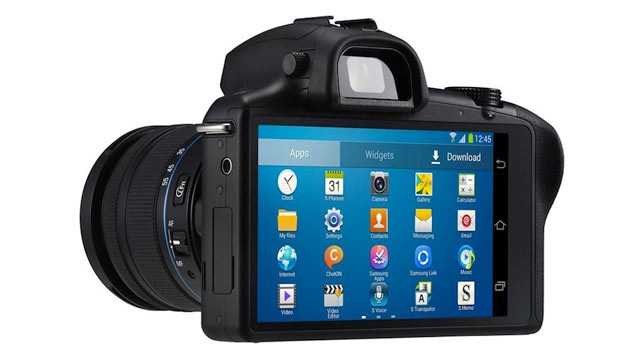Where does one start with Samsung's ATIV Q dual OS convertible tablet? Well, it's a dual OS convertible tablet — a huge convertible tablet, with a 13.3-inch starring a world's highest 3200 x 1800, 275 pixels per inch resolution screen (MacBook Pro 13.3-inch Retina screen: 2560 x 1600, 227 ppi) that sits on top of a full QWERTY keyboard. Yet the ATIV Q is only 13.9 mm thick (by comparison, an iPad is 9.4mm at its thickest point), that runs both Android 4.2.2 Jelly Bean and the full desktop version of Windows 8.
More pedantic, but still newsworthy in tablet land is the ATIV Tab 3, which Samsung claims is the world's thinnest 10.1-inch tablet at 8.2mm thick.
As with the just unveiled Samsung Galaxy NX CSC digital camera and Galaxy S4 Zoom smartphone, Samsung declined to say when and for how much the two ATIV's will sell.
ATIV Q: Solving An Eternal Road Warrior Problem
Any gadget-laden person who needs to work away from the office is always faced by a conundrum: can I get away with just a tablet, or do I need to schlep around my laptop? The 13.3-inch ATIV Q is aimed at removing the whole question because it does both, and weighs just 2.84 pounds; by comparison, Apple's 13.3-inch MacBook Air weighs 2.96 pounds and only runs one operating system, not three.
For some reason, Samsung failed to supply ATIV Q samples for hands-on examination at its New York demo with the other new products actually unveiled in London. That's why the photos in the gallery look studio sterile and why I can't tell you how the ATIV Q feels in the hand. So we'll have to stick with the specs.

Really more convertible laptop than tablet, the ATIV Q screen nestles atop a full QWERTY keyboard. Not only does it run both Android and Windows 8, you can also mix-and-match — one example given was being able to play the Angry Birds Android app in Windows. Samsung says you can also transfer files from Windows to Android; the wording of this description implies you can't transfer in the opposite direction.
As a notebook, ATIV Q features a multi-jointed hinge similar to the Acer Aspire R7's Ezel hinge, which lets you position the ATIV Q screen in a variety of landscape angles, include rear-facing for presentations across a desk, standard clamshell fashion, several entertaining but ultimately useless angles and, of course, flat back to the keyboard tablet-style.
Samsung also says its high-res screen readily adapts to varying lighting conditions both indoor but especially outdoor, the bête noir of all LCD screens.
Inside the ATIV Q is a fourth-gen (the newest) Intel Core i5 processor and an Intel HD Graphics 4400 graphics chip, 4GB of RAM, 128GB of SSD storage, a 720p rear camera and a battery supplying up to 9 hours of tableting or laptopping.
ATIV Tab 3: A tabula rasa
Well, not blank slate, exactly (that's what "tabula rasa" translates to), but a white 10.1-inch tablet that, as noted, Samsung claims is the world's thinnest (this week), and running the full version of Windows 8, not RT.

As noted, ATIV Tab 3 is just 8.2mm thick (iPad: 9.4 mm) and weighs just 1.21 pounds (iPad: 1.46 pounds), features a 1366 x 768 pixel resolution, includes 64GB of flashs torage (it's unknown if it'll come in lower configs). Most interesting is the ATIV Tab 3 runs on a dual core 1.8GHz Intel ATOM Z2760 processor and not any of Samsung's custom mobile processors. The Intel chip supposedly gives the ATIV Tab 3 10 hours of battery life.
ATIV commonalities
Both ATIVs also include a stylus and run Samsung's S Pen applications. Both also include something Samsung calls SideSync, which merge an Android phone with the Windows 8 functionality. For instance, you can use the ATIV larger keyboard to respond to a text on a smartphone, or view maps from your smartphone on the larger screen, or edit smartphone photos or videos on the bigger ATIV screen. Samsung says you can even use ATIV to backup and charge mobile devices.
Along with lack of hands-on samples of the ATIV Q, Samsung minders maintained control over the two ATIV Tab 3 samples, so there was no opportunity to get a demo of any of these features. Hopefully we'll get our hands on one at some point.
(All images courtesy of Samsung.)
For the latest tech stories, follow DVICE on Twitter
at @dvice or find us on Facebook







